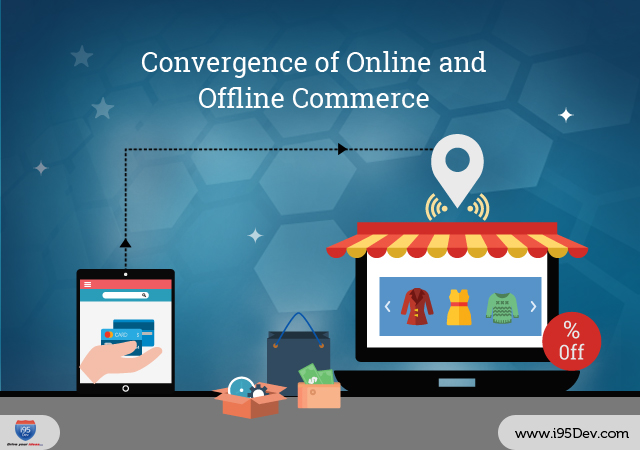Convergence of Online
and Offline commerce

Physical Stores are here to Stay
Millennials are all about online shopping, is a Myth (Accenture). With the rise in popularity of e-commerce, everyone predicted that physical stores would soon be dead. Brands like JCPenney, Macy’s, Sears, Kmart, Crocs, BCBG, Guess, etc. shutting down nearly 3,500 stores adds validity to that claim. On another hand, a number of online-only retailers like Birchbox, Warby Parker, Bonobos, and e-commerce giant Amazon are planning to open a series of physical stores. There is a certain disconnect.
E-commerce has definitely revolutionized how consumers shop. However, physical stores continue to offer some advantages and are far from dead. What we are seeing now is brands optimizing their costs by closing down the unprofitable locations and converging the experience they offer across channels. To do that, brands cannot look at their channels in isolation – even their existing physical stores need a digital makeover to continue to remain profitable.
Businesses often strived to provide a physical store like experience on their e-commerce stores. However, the table has now turned. They now have to digitalize their physical stores as well to provide similar convenience as e-commerce stores and consistent experience across channels. Here is how one of the greatest luxury brands in the world, Burberry, has embraced digital innovation and turned around its fortune by revamping both online and offline channels.
Burberry and the Compelling Lessons it has to Teach Retailers of Today
Well-known luxury British brand Burberry found itself in crisis until the right leadership came along. Burberry soon underwent a sea change, embraced technology to transform physical store experiences and to digitalize interaction with its customers. Here is how the brand stood out, and the key takeaways for us.
Effective use of Social Media
Burberry marked its presence on Facebook way back in 2009; it quickly built back its image by means of spotting and interacting with its target audience on social platforms. They streamed their fashion shows online and began selling through Twitter long before their competitors even had social media accounts – they are present on 20 different social platforms and have over 40 million followers that gives them a huge competitive advantage in terms of reach and engagement.
Evolved In-store Experiences
- Seamless flow of information across systems to drive personalization – Their physical stores were revamped to use cutting edge digital POS systems that gave their sales representatives access to customer details along with their purchase history. This enabled them to provide a seamless and more personalized service irrespective of their store location.
- Leveraging mobile to build connect – They also equipped their sales representatives with tablets, enabling them to be on the shop floor driving conversations with customers and providing end-to-end customer service.
- Leveraging technology to drive engagement – Large video screens and products with RFID tags took customer engagement to a different level – flashing these tags while passing a screen showcased craftsmanship, runway and history videos, information related to fit, suggestions and more.
Burberry’s progressive CEO proudly declared that “Walking through the doors is just like walking into our website”. It was not an understatement.
Leveraging both E-commerce and Physical Stores for Enhanced Customer Experience
Burberry stroked the right balance between their physical and e-commerce stores. They very well understood the importance of physical stores to drive in-store experience and importance of e-commerce to target, promote and educate their consumers.
To leverage both, Burberry, on their e-commerce landing pages featured two call-to-actions – one to add the product to cart, and one to find the product in a store. With this, the customers could easily research their products online and buy the product in the store. The customers also had the option of in-store pickup.
Despite being established in 1836, Burberry did not hesitate to adapt to newer technologies overcoming the tarnish it had to deal with in the early 2000s. The act helped the brand stay a step ahead of the competition and rising above in customer experiences provided to its audiences.
Want to deliver Burberry like Experience?
At i95Dev we are all about driving seamless and superior experience across channels. If you already have an e-commerce system in place, we can help you integrate your e-commerce system with other systems (ERP, CRM, POS, Online Marketplaces, Social, Mobile, etc.) – which is key to providing a seamless and consistent shopping experience. If you do not have an e-commerce platform in place, you can leverage our integrated multi-channel e-commerce solution – EGE, to get up and running in no time.



